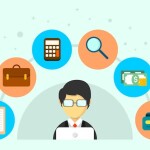- Table of Contents
- Defining Economic Impact Analysis
- Significance of Economic Impact Analysis
- Informed Decision-Making
- Holistic View of Economic Activities
- Effective Resource Allocation
- Risk Mitigation
- Community Engagement and Transparency
- Evaluation of Public Policy
- Long-Term Planning
- Global Competitiveness
- Stakeholder Collaboration
- Adaptability to Change
- Methods of Economic Impact Analysis
- 1- Input-Output Analysis
- 2- Computable General Equilibrium (CGE) Modelling
- 3- Social Accounting Matrices (SAMs)
- 4- Multiplier Analysis
- 5- Dynamic Simulation Models
- 6- Scenario Analysis
- 7- Cost-Benefit Analysis (CBA)
- 8- Survey Methods
- 9- Geospatial Analysis
- 10- Dynamic Input-Output Models
- Economic Impact Analysis vs. Fiscal Impact Analysis
- Defining Programme Evaluation
- Significance of Programme Evaluation
- Ensuring Accountability
- Optimising Resource Allocation
- Continuous Improvement and Learning
- Evidence-Based Decision-Making
- Demonstrating Impact on Stakeholders
- Enhancing Transparency and Public Trust
- Alignment with Organisational Goals
- Policy Learning and Adaptation
- Facilitating Data-Driven Decision-Making
- Public Policy Innovation
- The Synergy between Economic Impact Analysis and Programme Evaluation
- Conclusion
- One Last Word
When it comes to making informed decisions about policies, projects, and initiatives, understanding their potential economic impact is crucial. Economic Impact Analysis (EIA) and Programme Evaluation are two essential tools in the realm of economics that help us assess the implications of various actions on economies, societies, and communities. In this comprehensive exploration, we will delve deep into the concepts of Economic Impact Analysis and Programme Evaluation, their significance, methodologies, and the distinction between economic and fiscal impact analysis.
Defining Economic Impact Analysis
Economic Impact Analysis (EIA) is a systematic approach used to estimate the effects of a specific economic activity or event on an economy. This analysis takes into account a multitude of factors, including changes in output, employment, income, and tax revenue, to name a few. It's not just a numerical prediction; it's a comprehensive assessment of how an action ripples through an economy.
Significance of Economic Impact Analysis
The significance of Economic Impact Analysis (EIA) extends far beyond mere number-crunching; it serves as a critical compass for decision-makers, policymakers, and stakeholders navigating the complex landscape of economic activities. The importance of EIA becomes evident in its multifaceted contributions to understanding and shaping the economic landscape at various levels – local, regional, and national.
Informed Decision-Making
EIA is instrumental in providing decision-makers with a robust foundation for informed choices. Whether it's a city planning committee deciding on a new infrastructure project or a government evaluating the potential consequences of a policy change, EIA serves as a guiding light. By offering comprehensive insights into the expected outcomes, decision-makers can weigh the pros and cons, anticipating the economic repercussions of their choices.
Holistic View of Economic Activities
Beyond the narrow lens of profit and loss, EIA paints a holistic picture of economic activities. It considers changes in output, employment, income, and tax revenue, providing a nuanced understanding of how various sectors interconnect. This comprehensive perspective is invaluable for stakeholders, allowing them to grasp the intricate web of economic relationships and dependencies.
Effective Resource Allocation
EIA plays a crucial role in optimising the allocation of resources. Whether it's allocating funds for a new public project or determining the economic viability of a business expansion, understanding the potential economic impact guides resource allocation. This ensures that resources are directed toward endeavours that not only generate economic value but also contribute to broader societal and community development.
Risk Mitigation
Businesses, governments, and organisations face inherent risks when embarking on new ventures or policy changes. EIA acts as a risk mitigation tool by highlighting potential pitfalls and challenges. Through scenario analysis and sensitivity testing, decision-makers can identify areas of vulnerability and devise strategies to navigate uncertainties, ultimately contributing to more resilient and adaptive economic strategies.
Community Engagement and Transparency
Engaging with local communities is essential for the success and sustainability of economic initiatives. EIA fosters transparency by openly communicating the potential impacts of proposed actions. This transparency not only builds trust with the community but also allows for constructive dialogue, incorporating valuable local perspectives into the decision-making process.
Evaluation of Public Policy
For policymakers, understanding the broader economic implications of proposed policies is paramount. EIA serves as a tool for evaluating public policy effectiveness. It allows policymakers to assess whether a proposed policy aligns with broader economic goals, such as job creation, economic growth, and income distribution, enabling them to fine-tune policies for maximum positive impact.
Long-Term Planning
Economic Impact Analysis is not confined to immediate outcomes; it aids in long-term planning. By projecting the enduring effects of economic activities, decision-makers can formulate strategies that promote sustained growth and resilience. This forward-looking approach is essential for building economies that can withstand challenges and evolve over time.
Global Competitiveness
In an interconnected world, understanding how local actions resonate globally is crucial for maintaining competitiveness. EIA provides insights into how economic activities contribute to or detract from global competitiveness. This global perspective is especially relevant in industries where international markets play a significant role.
Stakeholder Collaboration
EIA facilitates collaboration among diverse stakeholders. Whether it's government agencies, businesses, or community groups, having a shared understanding of the economic impact fosters collaboration. This collaborative approach is vital for developing strategies that align with both economic objectives and societal well-being.
Adaptability to Change
The world is dynamic, and economic landscapes evolve. EIA equips decision-makers with the tools to adapt to change. By understanding the potential economic impact of various scenarios, stakeholders can proactively adjust strategies, policies, and investments to thrive in an ever-changing environment.
In essence, the significance of Economic Impact Analysis lies in its ability to illuminate the intricate dynamics of economic activities, providing a roadmap for decision-makers to navigate with foresight, resilience, and a commitment to sustainable development. As a cornerstone of evidence-based decision-making, EIA empowers societies to build economies that are not only prosperous but also equitable and resilient in the face of uncertainty.
Methods of Economic Impact Analysis
The realm of Economic Impact Analysis (EIA) is a methodologically rich landscape, employing various techniques to dissect, quantify, and interpret the complex interactions within an economy. Each method is tailored to specific contexts and data availability, offering decision-makers a diverse toolkit to explore and understand the multifaceted repercussions of economic activities. Let’s delve into some prominent methodologies employed in Economic Impact Analysis:
1- Input-Output Analysis
A cornerstone of Economic Impact Analysis, Input-Output Analysis breaks down an economy into sectors and meticulously calculates the interdependencies between them. By examining how changes in one sector ripple through the entire economic system, decision-makers gain insights into the indirect effects of economic activities. This method provides a detailed understanding of how a change in one sector, such as increased production, influences others, affecting employment, income, and output across the board.
2- Computable General Equilibrium (CGE) Modelling
CGE Modelling constructs a comprehensive model of an economy, capturing the intricate web of economic agents, their behaviours, and interactions. This method is particularly powerful when evaluating broader policy changes, such astax reforms ortrade liberalisation. CGE models simulate the responses of various economic agents to changes in policies, offering a dynamic and holistic view of the potential impacts. This approach enables decision-makers to explore the ripple effects of policy changes across sectors and understand the complex dynamics of the entire economic system.
3- Social Accounting Matrices (SAMs)
Social Accounting Matrices provide decision-makers with a framework to understand the intricate relationships between different stakeholders in an economy. SAMs outline the transactions between different economic agents, including households, businesses, and the government. By analysing these matrices, analysts can discern how changes in one sector reverberate through the entire economic network. SAMs are particularly useful for capturing the social and distributional aspects of economic activities, offering a more nuanced understanding of the societal implications of proposed actions.
Table 1: Comparison of the Different Methodologies
Methodology | Key Characteristics | Application |
Dynamic Simulation Models | Incorporates time for evolving economic scenarios. | Predicts long-term consequences of changing variables. |
Geospatial Analysis | Utilises mapping to visualise localised impacts. | Ideal for understanding regional economic dynamics. |
Scenario Analysis | Explores multiple hypothetical scenarios. | Provides insights into potential outcomes and risks. |
Cost-Benefit Analysis (CBA) | Compares project costs against societal benefits. | Ensures optimal resource allocation for maximum value. |
Survey Methods | Collects primary data directly from stakeholders. | Offers real-time insights into economic activities. |
4- Multiplier Analysis
Multiplier analysis is a straightforward yet powerful method used to estimate the total impact of an initial change in economic activity. Multipliers capture the ripple effects through the economy by quantifying how changes in one sector lead to subsequent changes in others. For instance, an increase in government spending can have a multiplier effect, boosting demand in various sectors and generating additional economic activity. This method is especially effective in assessing the broader economic implications of public spending or investment projects.
5- Dynamic Simulation Models
Dynamic simulation models add a temporal dimension to Economic Impact Analysis, allowing decision-makers to explore how economic impacts unfold over time. These models consider the dynamic nature of economic systems, accounting for changes in consumer behaviour, technological advancements, and market dynamics. By incorporating time into the analysis, decision-makers can better understand the long-term consequences of proposed actions, fostering more robust and adaptive economic strategies.
6- Scenario Analysis
Scenario analysis involves exploring multiple hypothetical scenarios to assess the potential range of economic impacts. Decision-makers can model different sets of assumptions and variables to understand how uncertainties might affect outcomes. This method is particularly valuable in situations where the future is uncertain or when various factors can influence the results. Scenario analysis enhances decision-making by providing a more comprehensive understanding of the range of possible outcomes.
7- Cost-Benefit Analysis (CBA)
While traditionally associated with assessing the economic viability of projects,Cost-Benefit Analysis can also be considered a method within the broader spectrum of Economic Impact Analysis. CBA systematically compares the costs and benefits of a proposed action, allowing decision-makers to weigh the economic advantages against the incurred expenses. This method is invaluable for ensuring that resources are allocated to projects that deliver maximum societal and economic value.
8- Survey Methods
In certain cases, particularly when specific data is not readily available,survey methods can be employed to collect primary data directly from businesses, households, or other relevant stakeholders. Surveys can provide real-time insights into the economic activities under consideration and offer a more accurate representation of the ground reality. While resource-intensive, survey methods contribute to the richness and accuracy of the data used in Economic Impact Analysis.
9- Geospatial Analysis
Geospatial analysis involves mapping and analysing the spatial distribution of economic activities. This method is particularly relevant when considering the localised impacts of projects or events. By visualising the geographic patterns of economic changes, decision-makers can tailor interventions to address specific regional needs and challenges.
10- Dynamic Input-Output Models
Combining the strengths of both Input-Output Analysis and dynamic simulation, Dynamic Input-Output Models offer a more nuanced understanding of how changes propagate through an economy over time. These models consider the evolving relationships between sectors, capturing the feedback loops and adjustments that occur as the economy responds to external stimuli.
Incorporating these diverse methodologies into the toolbox of Economic Impact Analysis empowers decision-makers to choose the most appropriate approach based on the specific context, goals, and available data. Each method contributes a unique perspective, enriching the overall understanding of the economic landscape and supporting the creation of well-informed, evidence-based policies and strategies.
Economic Impact Analysis vs. Fiscal Impact Analysis
While Economic Impact Analysis focuses on the broader economic effects of an action or event, Fiscal Impact Analysis narrows its scope to assess the impact on government finances, specifically revenue and expenditure. In other words, Economic Impact Analysis answers questions like "How does this action affect the overall economy?" while Fiscal Impact Analysis addresses questions like "What are the financial implications for the government?"
Consider a scenario where a city plans to attract a new manufacturing facility. An Economic Impact Analysis would delve into how this facility would influence the local economy, such as job creation and supply chain development. On the other hand, a Fiscal Impact Analysis would concentrate on the tax revenues generated by the facility, the costs of providing public services to its employees, and potential infrastructure investments required to support it.
Defining Programme Evaluation
Programme Evaluation is a systematic approach used to assess the effectiveness, efficiency, and relevance of programmes, policies, or interventions. Unlike Economic Impact Analysis, which primarily focuses on economic outcomes, Programme Evaluation considers a broader spectrum of factors, including social, cultural, and environmental aspects. It's not just about whether a programme achieved its intended outcomes; it's about understanding how it achieved them and at what cost.
Significance of Programme Evaluation
Programme Evaluation emerges as a cornerstone in the realm of public policy, social initiatives, and organisational strategies. This systematic approach plays a pivotal role in assessing the effectiveness, efficiency, and relevance of programmes, policies, or interventions. The significance of Programme Evaluation extends across various sectors, contributing to informed decision-making, improved resource allocation, accountability, and the enhancement of societal well-being.
Ensuring Accountability
One of the primary functions of Programme Evaluation is to establish accountability. When public funds are allocated to programmes, there is an inherent responsibility to ensure that these funds are used effectively and efficiently. Programme Evaluation provides a structured framework for assessing whether the objectives of a programme are met, holding stakeholders accountable for the outcomes, and transparently communicating the results to the public.
Optimising Resource Allocation
Scarce resources demand careful allocation, and Programme Evaluation serves as a guide in this process. By scrutinising the efficiency and impact of programmes, decision-makers can reallocate resources to initiatives that demonstrate effectiveness. This optimisation not only enhances the overall impact of public spending but also contributes to economic efficiency by directing resources where they are most needed and can deliver the highest societal value.
Continuous Improvement and Learning
Programme Evaluation fosters a culture of continuous improvement. By systematically assessing programmes, organisations can identify areas for enhancement, refine strategies, and adapt to changing circumstances. This iterative process of evaluation and improvement contributes to organisational learning, ensuring that lessons from past experiences are incorporated into future initiatives. It transforms programmes into dynamic entities that evolve and respond to emerging challenges and opportunities.
Evidence-Based Decision-Making
Informed decision-making is a key outcome of Programme Evaluation. Rather than relying on assumptions or intuition, decision-makers can base their choices on empirical evidence derived from the evaluation process. This evidence-based approach enhances the likelihood of successful outcomes and ensures that decisions align with the overarching goals and priorities of the organisation or government.
Demonstrating Impact on Stakeholders
Programme Evaluation goes beyond assessing quantitative outcomes; it delves into understanding how programmes affect the lives of stakeholders. This includes evaluating the social, cultural, and environmental aspects of interventions. By demonstrating the real impact on individuals and communities, Programme Evaluation provides a compelling narrative that goes beyond numbers, contributing to a deeper understanding of the value created by programmes.
Enhancing Transparency and Public Trust
Transparent communication of evaluation results builds public trust. When citizens are informed about the outcomes and impact of programmes, it fosters transparency in governance. Programme Evaluation becomes a tool for open dialogue between the government or organisations and the public, reinforcing trust in the decision-making process and showcasing a commitment to responsible resource management.
Alignment with Organisational Goals
Programme Evaluation ensures that implemented programmes align with the broader goals and mission of the organisation or government. This alignment is crucial for maintaining strategic focus and coherence in public policies. Evaluating programmes against organisational objectives helps in identifying whether interventions contribute to the overarching vision and mission, facilitating adjustments or redirection when needed.
Policy Learning and Adaptation
In dynamic socio-economic landscapes, policies and programmes need to adapt to changing conditions. Programme Evaluation provides the insights necessary for policy learning. Decision-makers can understand what works, what doesn't, and why. This knowledge enables the refinement of policies, ensuring they remain relevant, responsive, and effective in addressing evolving challenges.
Facilitating Data-Driven Decision-Making
Programme Evaluation relies on robust data collection and analysis. This emphasis on data-driven approaches enhancesdecision-making by providing accurate and objective information. The data generated through evaluations become a valuable asset for decision-makers, enabling them to track progress, identify trends, and make well-informed choices based on a solid foundation of evidence.
Public Policy Innovation
Programme Evaluation encourages innovation in public policy. By learning from the successes and failures of past initiatives, decision-makers can innovate and experiment with new approaches. This adaptive mindset contributes to the evolution of effective and innovative public policies that address emerging challenges and seize opportunities for positive societal change.
In conclusion, the significance of Programme Evaluation lies in its transformative impact on governance, organisational strategies, and societal well-being. It serves as a compass for decision-makers, guiding them towards accountable, efficient, and impactful interventions. By embracing Programme Evaluation, governments, organisations, and stakeholders pave the way for a more responsive, adaptive, and effective approach to addressing the complex challenges of our rapidly changing world.
The Synergy between Economic Impact Analysis and Programme Evaluation
While Economic Impact Analysis and Programme Evaluation might seem distinct, they often intersect, especially when it comes to evaluating the outcomes of economic activities. Consider a government-funded job training program aimed at improving employability for a specific demographic. An Economic Impact Analysis would provide insights into how the programme influenced job creation, income levels, and tax revenues. Simultaneously, Programme Evaluation would delve into the effectiveness of the training itself – Did it equip participants with relevant skills? Did they find sustainable employment?
This synergy is not just about combining data from different sources; it's about creating a comprehensive narrative of how economic actions translate into tangible improvements or changes. It's a holistic approach that considers not only the quantitative outcomes but also the qualitative aspects of change.
Conclusion
In conclusion, Economic Impact Analysis and Programme Evaluation are two indispensable tools in the economic realm, providing us with invaluable insights into the consequences of our actions. Economic Impact Analysis goes beyond numbers, painting a vivid picture of how economic activities reverberate through societies. Programme Evaluation, on the other hand, ensures that programmes and policies are not just effective, but also efficient and relevant.
As we navigate the complexities of an ever-changing world, these analytical approaches guide us in making well-informed decisions. They empower us to not only quantify the impact of our choices but also to understand the underlying mechanisms that drive change. By embracing both Economic Impact Analysis and Programme Evaluation, we pave the way for more prosperous, equitable, and sustainable societies.
In your journey to master the intricacies of Economic Impact Analysis and Programme Evaluation, elevate your skills with our specialised course, ‘Business Continuity Plan Building.’ Gain a competitive edge by learning the art of crafting robust and adaptable business continuity plans. This course provides a hands-on approach to developing strategies that ensure resilience in the face of economic uncertainties and unforeseen disruptions. Uncover the secrets to maintaining seamless operations, safeguarding your business, and thriving in dynamic environments. Don't just analyse impact; learn to proactively shape the outcomes. Enrol in our Business Continuity Plan Building course today and be at the forefront of steering organisations toward prosperity and sustainability. Elevate your expertise, enhance your decision-making prowess, and lead with resilience in an ever-evolving business landscape.























